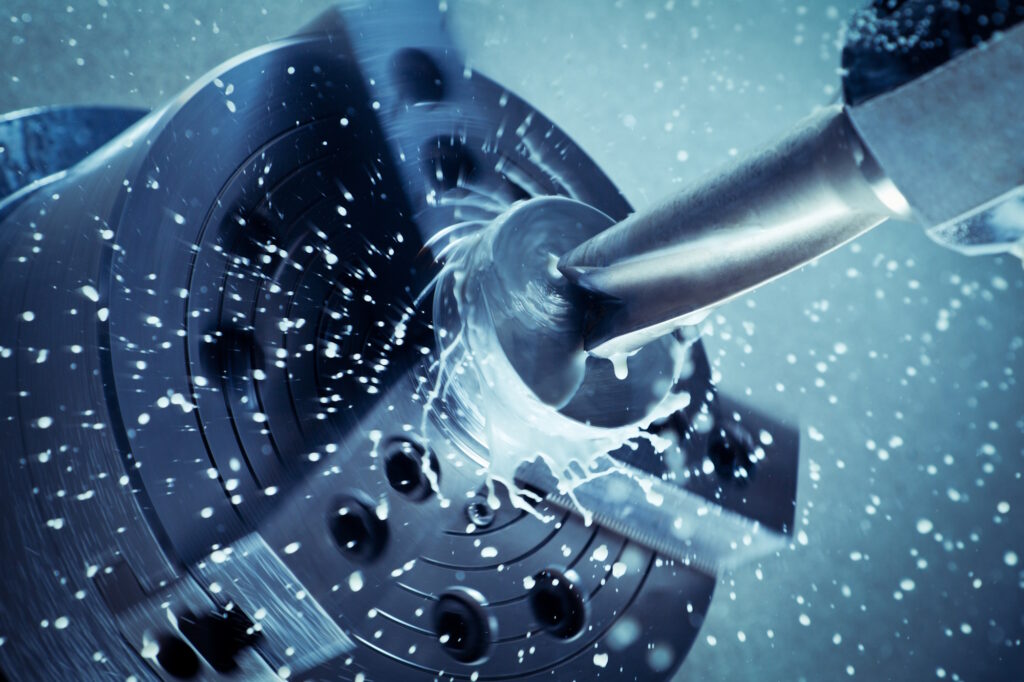What does CAD/CAM stand for?
CAD/CAM stands for Computer-Aided Design and Computer-Aided Manufacturing. Together, they form a significant part of the advanced manufacturing process.
- CAD is the use of computer software to assist in the creation, modification, analysis, or optimization of a design. It is primarily focused on creating 2D or 3D models, increasing both efficiency and precision in the design process.
- CAM technology helps to automate the production process. It takes the design created with CAD and translates it into instructions that computer numerical control (CNC) machines can understand and execute, thus facilitating precise and efficient manufacturing.
CAD and CAM stand out in the field of manufacturing. To manufacturing professionals, designers, CNC machinists, and engineering students, understanding the significance of CAD and CAM systems is critical.
Addressing key challenges through CAD and CAM
The complexity of modern-day manufacturing poses several challenges. These include precision in design, reduction of waste, speed of production, and the ability to produce intricate geometries. CAD and CAM systems directly address these challenges by streamlining the process from design conception to final production.
Furthermore, CAD software facilitates the design of products with a high degree of accuracy and provides tools to assess feasibility and functionality even before a prototype is produced. CAM systems translate these intricate designs into precise instructions for machinery, optimizing production paths to enhance manufacturing efficiency and minimize material usage.
The tangible benefits of embracing CAD/CAM programs
The integration of CAD and CAM in manufacturing environments yields significant benefits:
● Enhanced Product Quality: With CAD’s detailed models and CAM’s precise machine control, the product quality is significantly improved, leading to higher satisfaction and less rework.
● Time Efficiency: Automated processes in both designing and manufacturing phases drastically cut down on lead time.
● Cost Reduction: Minimizing errors and material wastage results in direct cost savings.
● Agility in Innovation: The capability to quickly iterate designs in CAD and promptly execute production runs with CAM allows for rapid response to market or customer demands.
The risks of forgoing CAD and CAM software
In contrast, the absence of CAD and CAM software for cnc machining in a manufacturing workflow can lead to several disadvantages:
● Increased error margins: Without the precision of CAD and CAM, errors become more frequent, affecting consistency and reliability.
● Higher production costs: Manual processes and corrections post-production contribute to escalating costs.
● Competitive Disadvantage: Lack of CAD and CAM reduces agility and adaptability, key in maintaining an edge in the current competitive landscape.
Synergy of CAD and CAM integration
When CAD and CAM are integrated on the same platform, it creates a seamless workflow allowing instant communication and adjustments between design and production. This synergy enables dynamic adjustments, real-time feedback and collaboration which eliminates redundant steps and positions manufacturers for success in today’s intricate and quickly shifting markets.

The future is now
The landscapes of industries like manufacturing, supply chain management, logistics, and services are increasingly technology-driven, with CAD and CAM being at the forefront. The combination of Dassault Systèmes’ CATIA and DELMIA exemplifies the technological integration essential for staying ahead in the competitive curve.
By merging the creative potential of CAD with the productive prowess of CAM, Dassault Systèmes offers a platform that is not only about meeting today’s demands, but also anticipating tomorrow’s challenges. This is manufacturing at the zenith of technological integration, where innovation breathes life into every blueprint and precision fuels the factories of the future.
Find more information on CAD/CAM solutions
Learn more about DELMIA CAM (Machining):
https://www.3ds.com/products/delmia/industrial-engineering/machining
Listen to DELMIA’s Global Operations on the Go podcast
Download the latest ebook on how CNC Machining knowledge capabilities can help solve the manufacturing labor crisis
https://discover.3ds.com/master-manufacturing-labor-crises-cnc-machining-knowledge
Read the ISCAR and Dassault Systèmes Machining Workshop – Highlights:
ISCAR and Dassault Systèmes Machining Workshop – Highlights | DELMIA
Join the DELMIA Fabrication Community (for FREE)
Check out Accelerated CAM-Programming with DELMIA Machining Webinar Replay:

